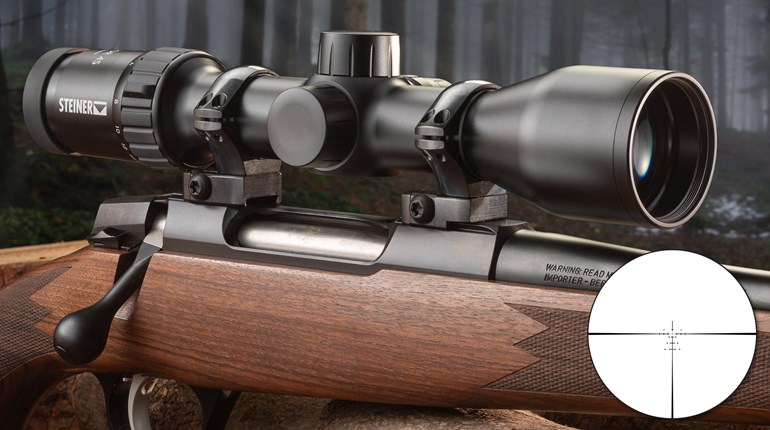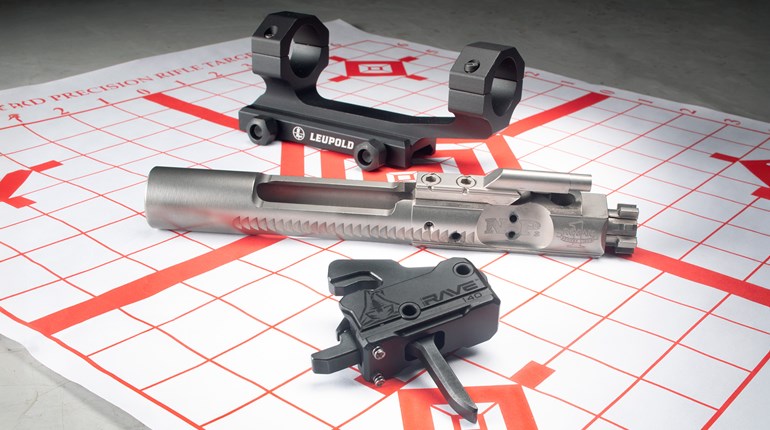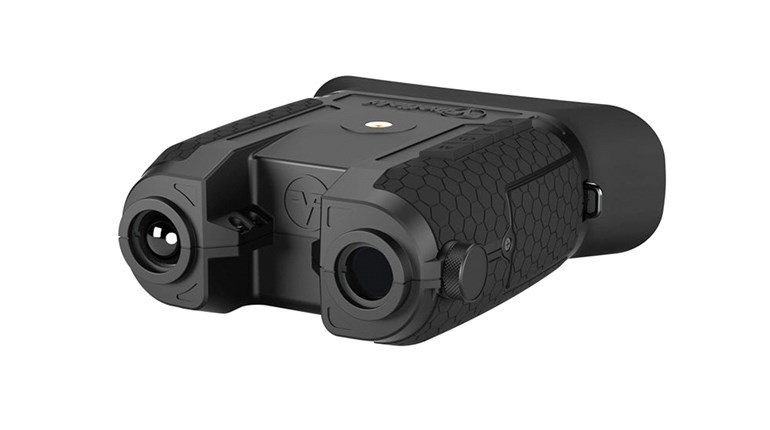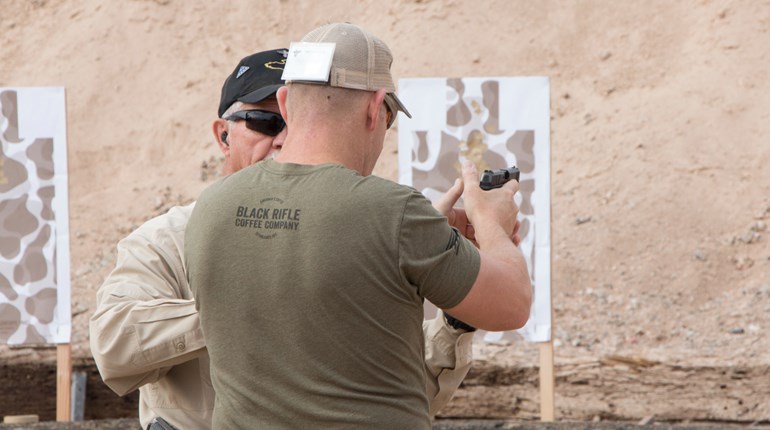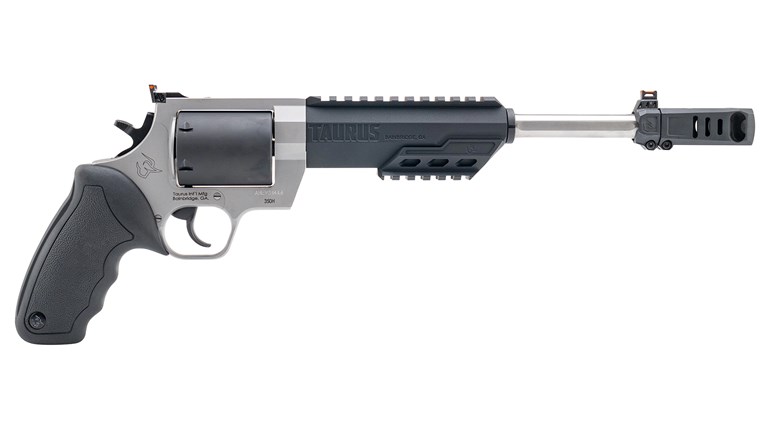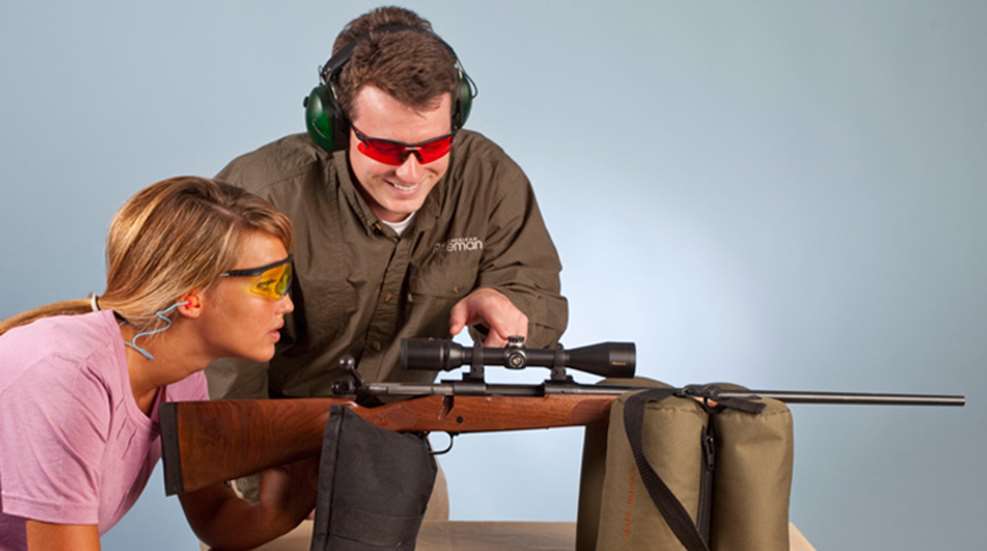
Optics are an important part of the modern gun enthusiast's toolkit. While the science that makes them work is quite complicated, optics themselves are fairly simple to use. The sheer number of options out there can be confusing, however, so it's important to know what you are looking at when selecting a riflescope or binocular.
You will often hear, and always see on the optic itself, a series of numbers used to describe the binocular or riflescope. You've probably heard people say something along the lines of, "I'm looking for a three to nine by 40 riflescope to put on my deer rifle." What does that mean? Well, all optics are fundamentally defined by those numbers. The first two refer to the range of magnification. Three to nine, or 3-9 as it is written on the scope itself, means that the scope will make objects appear three to nine times closer than they actually are, depending on the setting you choose. On most binoculars, the magnification is fixed, so if you have a bino with 10X42 indicated on it, an object that is 100 yards away will look like it is only 10 yards from you.
The number appearing after the "X" is the size of the objective lens, or the lens at the far end of the optic. The larger the size of this number, the larger the lens. Larger lenses mean more light can be gathered. Why is this important? Everything we see is based on light reaching our eyes. Our eyes themselves have a lens and a pupil, which controls how much light reaches the optic nerve and is translated into a recognizable image by our brains. Hunting optics are similar in that they gather light and transmit it to our eyes. The bigger the objective lens, the more light enters the optic, but here is where things get a little more complicated.
Based on the fact that large objective lenses gather more light, you might think that any scope with a 50mm objective lens would be brighter than a scope with a 42mm objective lens. But this is not always true. Each glass surface absorbs some of the light that passes through it. This is unavoidable, but quality optics will absorb less light per lens surface than inferior optics. You will often hear this feature described as "light transmission," usually expressed as a percentage. The percentage refers to the amount of light entering the objective lens that actually reaches your eye at the other end of the optic. The higher the number, the more light reaches your eye. More light reaching your eye means a brighter image that's more easily recognized by your brain. This is particularly important for low-light situations, such as the time just after sunrise or just before sunset, when game animals tend to move the most.
Unfortunately, the mystery does not end there. It would be easy to make a riflescope have very high light transmission, but the image you see would be unclear. The quality and quantity of lenses used in a riflescope or binocular play a vital role in image clarity, but each additional lens surface absorbs more light, so there is a tradeoff between clarity and brightness. The best riflescopes have light transmissions in the 92-95 percent range, which provides a good balance between brightness and image clarity.
Controlling for the quality of the lenses, scopes and binoculars with larger objective lenses will be brighter than smaller objective models. If you are shopping for an optic within a single product line or price range, the bigger objective models will probably be brighter. Size, however, is an important factor. You probably don't want to lug a huge binocular around in the woods, and large-objective riflescopes may not mount properly on your gun, so always consider the manner in which you plan to use an optic before deciding to purchase one.
Here is where binoculars and riflescopes need to be discussed separately owing to their different uses.
Binoculars should always be used while hunting so you don't rely on a riflescope until you are ready to shoot. If you need to identify a target, looking through a riflescope is a violation of the safety rules, as you will be pointing the muzzle of your gun at an unidentified object (which could be another person or an animal you don't intend to shoot). But what kind of binoculars should you use?
There are two basic options when selecting a binocular: Porro prism and roof prism. Porro prism binoculars reflect light off of a "corner" inside the chassis. They look bent because the objective lenses are not in a straight line with the eyepieces. Porros tend to be substantially larger than roof prism models, but they offer superior depth in the image. Roof prism binoculars align the objective lenses with the eyepiece and can therefore be made more compact. They are also easier to make waterproof, an important consideration if you plan on spending a lot of time in the field during hunting season. Thanks to advanced optical coatings like phase-correction coating, the flat images common to older roof prism designs can be eliminated. You should be aware that some of these models can be quite expensive.
Because the roof prism design is more popular thanks to its compact size, most optics companies offer their best-quality options in roof prism binoculars. As long as it includes phase-correction coating, a roof prism binocular is likely a better choice for hunters, but don't ignore a good waterproof Porro design: It can save you money and will offer a fine quality image.
Riflescopes are very important to ensure you hit your target at the range, or humanely harvest an animal in the field. While iron sights can be extremely effective, a sight with magnification helps reduce human error and makes it easier to hit where you aimed. Simply slapping a scope atop your rifle, however, does not mean it is ready to go afield.
Riflescopes should be properly mounted using the appropriate rings and bases for your gun. They must then be boresighted, which means the reticle (or crosshair) is properly aligned with the barrel. The easiest way to boresight a rifle is to pick up a tool that magnetically attaches to the muzzle and adjust the scope based on the how this tool aligns with the reticle. (More on adjustments in a bit.)
After boresighting, you will need to zero your rifle at the range. To do this, you should know roughly how far you will be shooting in the field. A standard zeroing range is 100 yards, which will cover most hunting distances in the eastern United States. You may choose to zero at 200 yards if you know you will be required to take long shots. Next, you need to fire at least three rounds at a paper target, preferably with a grid. These rounds should form a small group somewhere on the target. Based on the grid, you will be able to determine how far up or down and left or right you need to adjust the reticle to put the rounds in the center. To adjust the reticle, the knobs on the riflescope's midsection need to be turned. Generally the top knob covers elevation (up and down) while the knob on the right side covers windage (right and left). The knobs will "click" for each increment, which is usually ¼- or ⅛-inch at 100 yards. Therefore, if your group is 2 inches high and 3 inches right at 100 yards using a scope with 1/4-inch adjustments, you will need to click the top adjustment down eight times and the side adjustment left 12 times to bring your scope to zero. Confirm your adjustments by shooting another group, which should be in the center of the target. If you need to make further adjustments, no problem, but always make sure your changes are correct by firing another group until you are satisfied that you are zeroed in.
Optics are perhaps the most important tool for a shooter aside from his or her gun. They can help make you a better hunter and ensure that you ethically harvest an animal, but they cannot replace the most important part of the successful hunter-you. Practice with your riflescope to make sure you know how to use it and are comfortable shooting with a magnified sight. Always bring your binocular with you into the field so you can safely judge a potential quarry and spot game and non-game animals with ease. Most of all, enjoy the enhanced view of the world through your optics. The science behind them may be confusing, but the tools themselves are easy to use and will help make hunting more fun.














